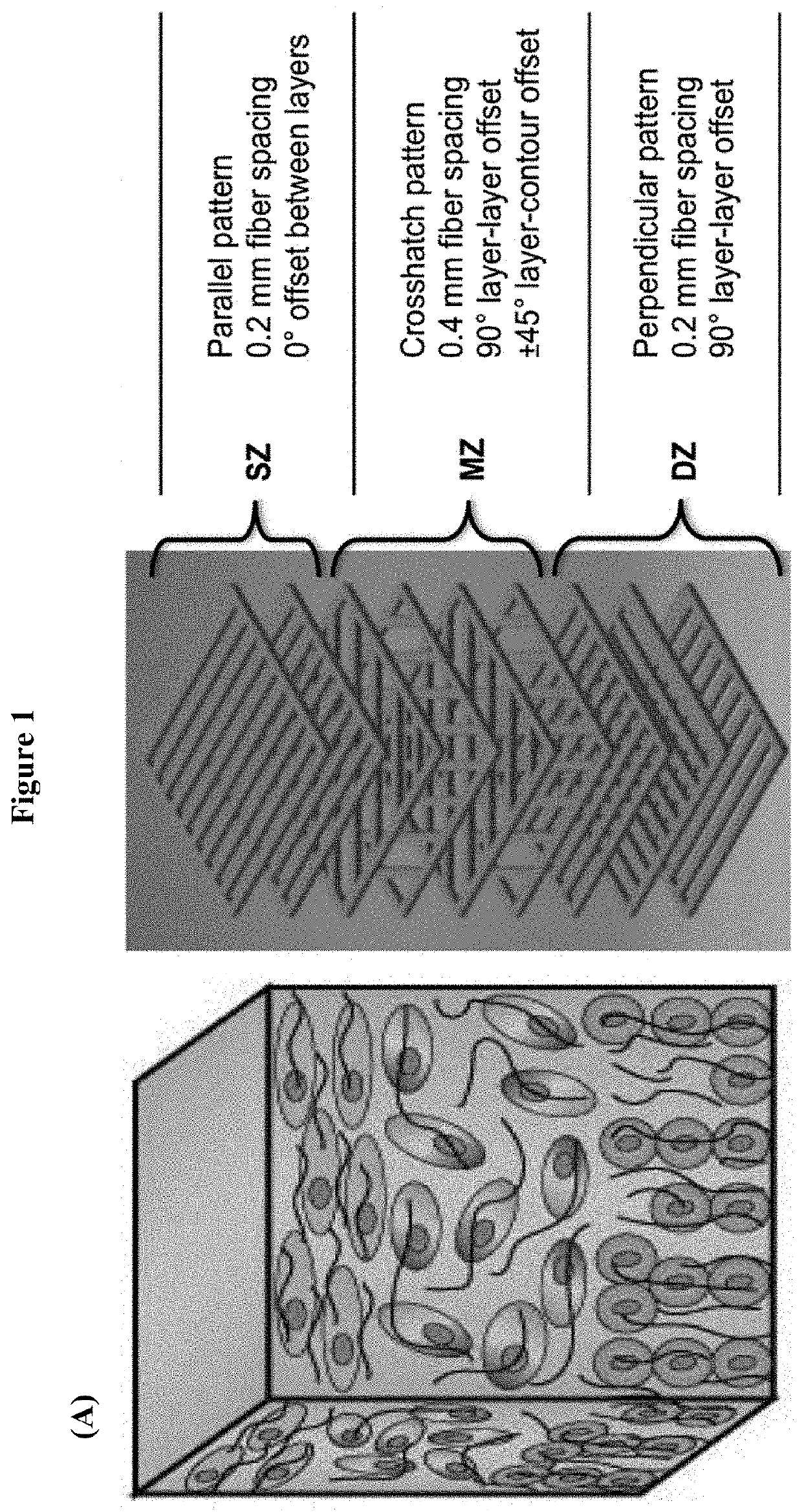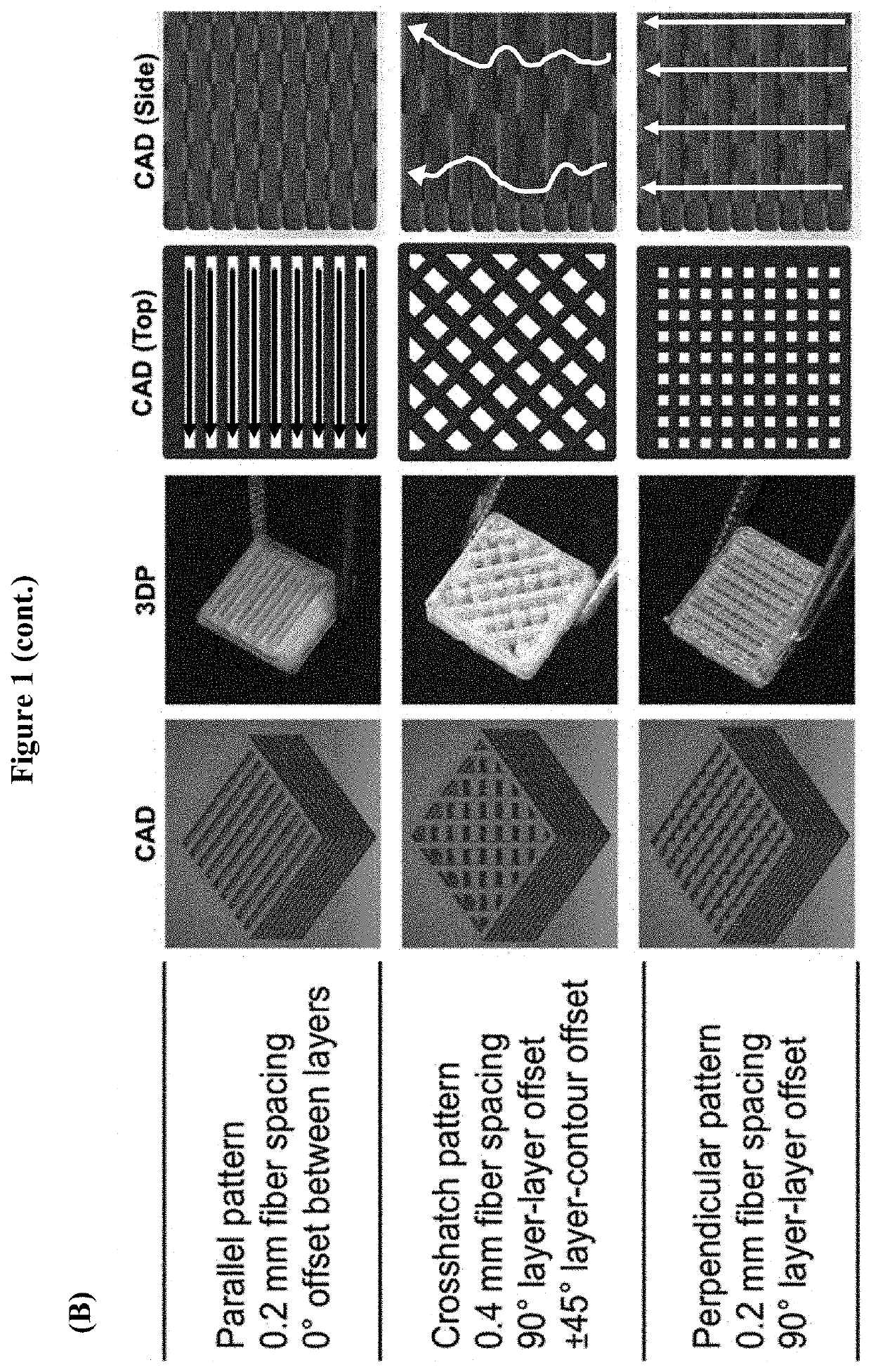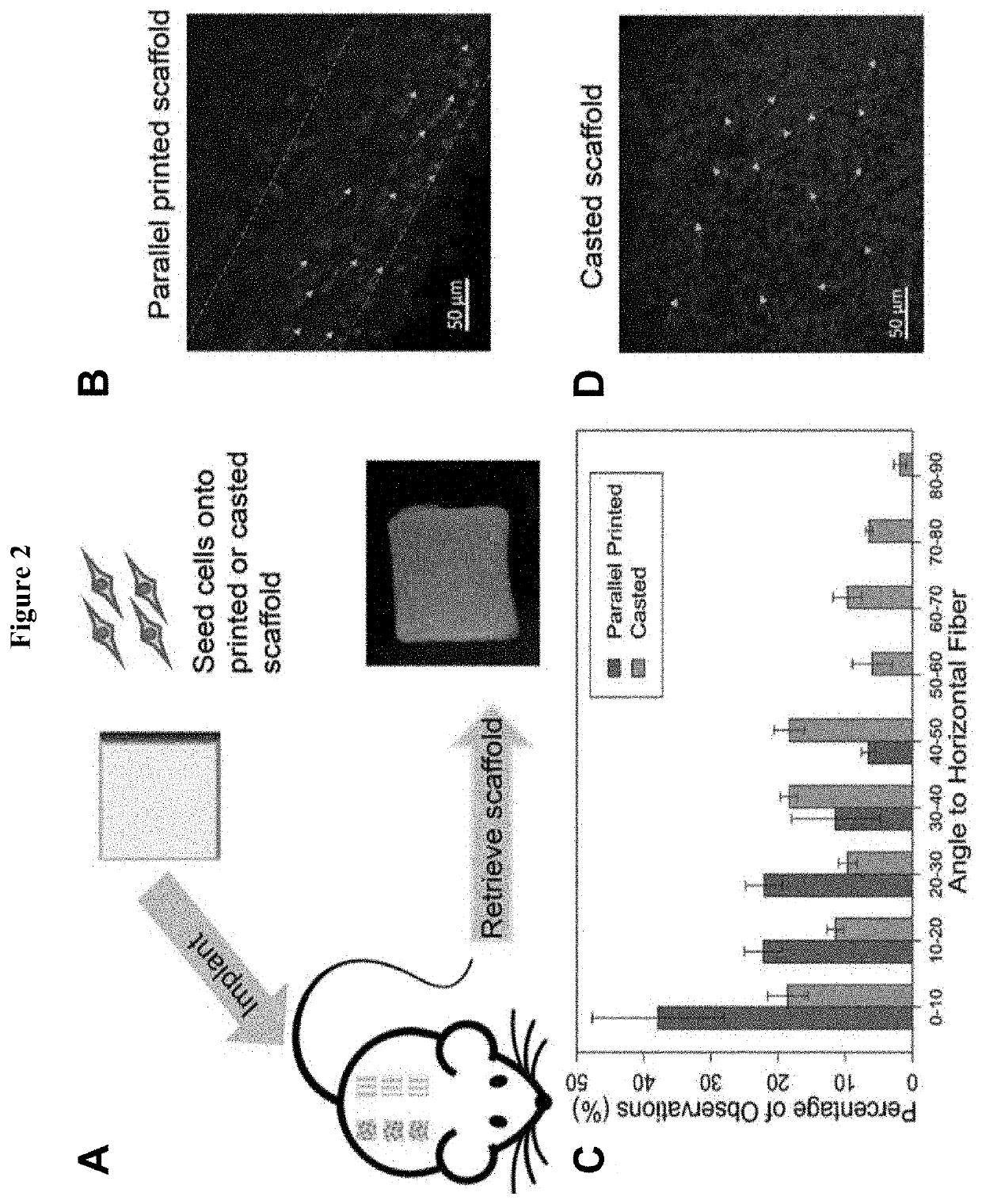Acellular Bioactive Scaffold Device and Methods of Fabrication and Treatment Relating Thereto
- Summary
- Abstract
- Description
- Claims
- Application Information
AI Technical Summary
Benefits of technology
Problems solved by technology
Method used
Image
Examples
example 1
[0070]Scaffold Fabrication
[0071]An exemplary scaffold implant device suitable for cartilage implant was fabricated in a layer-by-layer fashion via extrusion-based 3D printing. A scaffold implant customized for a particular patient may be readily fabricated starting from a CAD model that can be either designed using commonly available software, or directly generated from imaging data routinely collected in the clinics (e.g. MRI, CAT scan, etc.). The scaffold was extruded in three different zonal layer patterns (FIG. 1, Panel A) designed to guide the growth and differentiation of resident stem cells according to the three different zones observed in native cartilage. The three layer patterns include: i) a parallel pattern, wherein tissue ingrowth occurs in a horizontal and parallel fashion as observed in the superficial zone (SZ) of articular cartilage; ii) a cross-hatch pattern, wherein the random presence of fibers and pores results in random alignment of cells and extracellular mat...
example 2
[0079]An animal study was conducted in order to evaluate the performance of microfracture surgery when combined with the disclosed scaffold implant. As demonstrated herein, the addition of an acellular PLCL scaffold device following microfracture provided effective guidance to the stem cells released from the bone marrow and resulted in substantially enhanced cartilage regeneration. The results were even more significant when using a PLCL scaffold functionalized with aggrecan, and resulted in an even higher cell / ECM retention from the bone marrow via microfracture, thicker cartilage formation, and deposition of ECM (collagen type I, glycosaminoglycans) similar to that of native cartilage.
[0080]3D-Printed Aggrecan-Functionalized Scaffold
[0081]A 3D-printed scaffold functionalized with aggrecan demonstrated a substantial improvement in the quality of regenerated cartilage tissue during microfracture as compared to conventional techniques. As the main proteoglycan component of native ar...
example 3
[0128]3D Printed Interface Scaffolds for Cartilage Regeneration
[0129]A multilayer scaffold composed of poly(L-lactide-co-caprolactone) (PLCL) and amine end-capped poly(lactic-co-glycolic acid) (amine-PLGA) was successfully printed with high resolution. The disclosed approach creates a regenerative environment with a robust bone-cartilage interface within an osteochondral implant. It is believed that co-printing the architecture at the bone-cartilage interface improves the adhesion between the bone and cartilage layers by increasing the contact points between the print strands of the same mixture at the interface.
[0130]Preliminary experiments demonstrated the feasibility of interface printing via a 3D printing strategy (FIG. 15). A thermoplastic polymer mixture of PLCL and amine-PLGA (as described in Example 2 above) served as the chondral matrix, while polycaprolactone (PCL) served as the primary osteo matrix. Exemplary printing patterns of the bone and cartilage layers were explore...
PUM
| Property | Measurement | Unit |
|---|---|---|
| Thickness | aaaaa | aaaaa |
| Bioactive | aaaaa | aaaaa |
Abstract
Description
Claims
Application Information
 Login to View More
Login to View More - R&D
- Intellectual Property
- Life Sciences
- Materials
- Tech Scout
- Unparalleled Data Quality
- Higher Quality Content
- 60% Fewer Hallucinations
Browse by: Latest US Patents, China's latest patents, Technical Efficacy Thesaurus, Application Domain, Technology Topic, Popular Technical Reports.
© 2025 PatSnap. All rights reserved.Legal|Privacy policy|Modern Slavery Act Transparency Statement|Sitemap|About US| Contact US: help@patsnap.com



